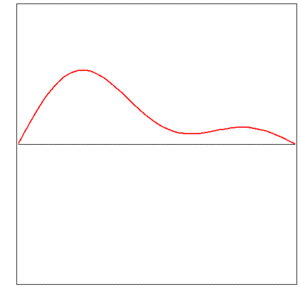User:Boris Tsirelson/Sandbox1: Difference between revisions
imported>Boris Tsirelson No edit summary |
imported>Boris Tsirelson No edit summary |
||
| Line 19: | Line 19: | ||
D'Alembert held the opinion that the ''de-facto'' standard mentioned above still applies; ''f''<sub>0</sub> must be represented by a single equation. (He changed his opinion in 1780.) | D'Alembert held the opinion that the ''de-facto'' standard mentioned above still applies; ''f''<sub>0</sub> must be represented by a single equation. (He changed his opinion in 1780.) | ||
The old standard was repudiated by Euler in 1744. He introduced "mixed" functions, given by different equations on two or more intervals. Moreover, he admitted | The old standard was repudiated by Euler in 1744. He introduced "mixed" functions, given by different equations on two or more intervals. Moreover, he admitted functions that do not comply with any analytical law, whose graphs are traced by a free stroke of the hand. | ||
Revision as of 06:00, 19 November 2010
In Newtonian mechanics, coordinates of moving bodies are functions of time. For example, the classical equation for a falling body; its height h at a time t is
(here h0 is the initial height, and g is the acceleration due to gravity). Infinitely many corresponding values of t and h are embraced by a single function f.
The instantaneous shape of a vibrating string is described by a function (the displacement y as a function of the coordinate x), and this function changes in time:
Infinitely many functions ft are embraced by a single function f of two variables,
After some speculations by Galileo and mathematical interpretation by Brook Taylor (1715), the mathematical theory of vibrating string was started by Jean d'Alembert (communicated in 1746, published in 1749). His approach is equivalent to a partial differential equation written out by Leonhard Euler in 1755,
now well-known as the one-dimensional wave equation.
The initial shape of the string is given by the function f0. It was a controversial question in the 18th century, whether f0 must develop into a power series, or not necessarily.
D'Alembert held the opinion that the de-facto standard mentioned above still applies; f0 must be represented by a single equation. (He changed his opinion in 1780.)
The old standard was repudiated by Euler in 1744. He introduced "mixed" functions, given by different equations on two or more intervals. Moreover, he admitted functions that do not comply with any analytical law, whose graphs are traced by a free stroke of the hand.




